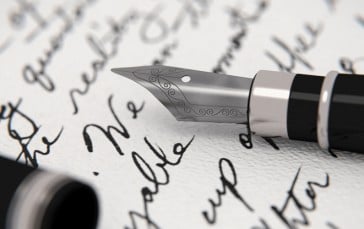Tips For Learning Speed Reading
Speed reading: digesting more information per minutes, getting through your workload faster, and just being more productive all around. We wanted to learn how to speed read and thought it was an excellent opportunity to experiment with what does and doesn’t work. There’s a ton of hype out there, especially since apps rolled around, but as a spoiler alert, most of them don’t do much for you. We found that some time-tested, age-old methods really did a number on our WPM (words per minute) reading speed.

Make it a Habit to Read Every Single Day
Whether it’s a book, a full article on your favorite website (hint hint wink wink), if you have to learn something fast, or you’re just trying to get through that stack of work so you can check out for the weekend, you need to read every single day. With so much visual media, Americans are reading less and less, and if you don’t use it, you lose it (your speed, at least).
You should get ten to fifteen minutes of uninterrupted reading each day. Whether it’s a train ride, relaxing on the back porch with nobody bothering you, or any other system that works for you, it’s critical to constantly sharpen and maintain your skill. That being said, let’s get into the actual speed reading portion of this article.
Let’s Talk About Speed Reading Goals
We like to keep it real with you guys. You’ve probably seen some posts about reading 1,400 WPM, but that’s a ton of utter bull. Even if you can scan that many words at once, it’s an unreasonable expectation, and you’re not truly absorbing the information. Our eyes work a certain way, and how they retrieve information from text works in another way. We can use these tricks to speed read and perceive information more quickly, but just keep in mind that you’ll be measuring your success by how much you comprehend what’s going on rather than how many words you think you scanned.
The average adult can read between 200 and 400 WPM. That’s a fairly broad range, and most books tend to have between 320-370 words on the page, so roughly a page a minute for the higher end of the tier. We’re just getting the reality of speed reading down; it is doable and possible with proper efficiency.
We’re looking to double your reading speed here, potentially allowing you to read around three standard-sized book pages per minute.

Subvocalizing, and How it Hinders Your Read Speed
You’re reading this, and the words are being spoken in your head. They’re probably at a fairly standard pace like someone is having a conversation with you. That’s subvocalizing. When we stop doing that, when we read the words for what they are instead of sounding them out in our heads, we’re basically unlocking the door to speed reading mastery.
This is the hardest part of speed reading, and where it starts to get a little mish-mashed. You’ll see all these apps, posts and programs talking about the possibility of thousand-word WPMs and all that nonsense, but that’s where you stop comprehending the words.
You’re basically going to unlearn everything about reading and comprehension and apply some raw knowledge and practice to it. If you can stop hearing the words in your head, subvocalizing, you’ll find yourself scanning through words a lot faster.
Set Your Own Goal
If you just want to improve your current read speed, if you feel like it’s lacking, that’s perfectly okay. You don’t have to stick with our three-page goal, but you should set some sort of a goal. When we don’t set a clear finish line, it’s so much easier to feel frustrated.
In order to set your own goal, first, you need to know where you stand in your read speed. Grab any book off the shelf, turn a timer on, read the first page (with subvocalizing), and stop. Check your time. Write it down or save it somewhere, because you’re going to try and beat it within the first day of learning how to speed read.

You Need a Tool
Most people use their index finger when trying to learn how to speed read: you need a pointer, something that’s going to be your conduit that absorbs the words and feeds them to your brain (figuratively speaking, of course). I personally use a bookmark and hold it horizontally, essentially highlighting the line I’m currently reading. I slowly lower it down the page, one line at a time, keeping my eyes on a clear and concentrated goal.
You’ll notice some people use manilla envelopes because the color contrast against the white and black of their book is simple to see. Speed readers use a tool, whether it’s your index finger or something else, in order to hit those goals we were talking about.
Stand Back
The term suffix “nose in a book” stems from the fact that readers constantly use their pages to form a shield, keeping their focus on the pages and the universe in their novel, and blocking out the outside world. This is the enemy of speed reading.
This is going to be dependent on your eyesight, but you need to have the book or page at a proper distance from your eyes. You want to be able to see the entire line that you’re on, without having to skitter your eyes across the page.
Understanding how you read is half the battle, but I can almost assure you that your eyes dart left and right when you try to quickly read a line on a page. Your eyes are already going to be held wide open while you’re reading, so adding these strenuous movements isn’t helping anything. Don’t look at the page as three to five-word clusters all strung together. Instead, look at it as a series of lines, being read one at a time.

Jumping Over Connectors
At. The. If. Of. You don’t need ‘em, scrap them. You can scroll back up to the second subheading on this page, and see that it, a, and to are all lowercase despite being in a title. They’re important to grammar, but not necessarily to your understanding of how the primary words work. For example, that subheading reads “Make it a Habit to Read Every Single Day.”
While it’s not correct or proper in terms of English, if I had written “Make Habit Read Every Single Day,” you would have gotten the same message with three fewer words. Since we can’t evade those words in books and articles, we need to learn to skip over them. Notice them on sight, understand that they’re not fully important to get the jist of what you’re reading.
Time to Test Yourself
Use your newfound skills, give it a bit of practice on that same page, and look at how quickly your time is shaved down from your original read speed. A little bit of it will be familiarity with that page, but most of it is you trimming, extracting the important content, yet still fully understanding what’s going on. Speed reading isn’t simply getting through a page quicker, it’s comprehending the content faster. It’ll do you no good if you “read” the page and don’t know a lick of what was said. Practice, increase slowly over time, and you’ll be breezing right past your old read time.







